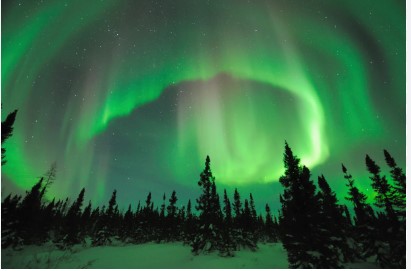Context:
Recently, during a strong solar storm hitting the Earth, an aurora borealis was sighted over Hanle village in Ladakh.
More on the News:
- Northern lights (aurora borealis) were witnessed in parts of the world, including in the United States, Europe and China.
- Meanwhile, southern lights (aurora australis) were spotted in countries such as New Zealand and Australia.
- The Indian Astronomical Observatory captured the aurora borealis above Mount Saraswati in Ladakh’s Hanle region, a rare sight at lower latitudes such as 34-36°N.
About the auroras:
- Auroras are natural lights that look like colourful curtains in the night sky.
- It is seen in different colours like blue, red, yellow, green, and orange etc.
- It usually appears near the North and South Poles all year, but sometimes it can be seen in lower latitudes too.
- In the north, it is called the aurora borealis, and in the south, known as the aurora australis.
Causes of auroras:

- It is due to activity on the Sun’s surface.
- The Sun releases a stream of charged particles (electrons and protons) and magnetic fields
- called the solar wind.
- When this solar wind gets near Earth, our planet’s magnetic field deflects it, acting like a shield.
- But some of these charged particles get trapped in Earth’s magnetic field and travel down to the poles, where they enter the upper atmosphere.
- There, solar wind particles interact with different gases, creating flashes of light in the sky.
- When these particles collide with oxygen, they make a green light, and when they hit nitrogen, they make blue and purple lights etc.
- Auroras can sometimes reach lower latitudes when the solar wind is really strong due to solar flares and coronal mass ejections (CMEs).
- These extra bursts of energy in the solar wind can cause geomagnetic storms, which are temporary disturbances in Earth’s magnetic field.
- During these storms, auroras can be seen in mid-latitudes.
- Recently, one of these storms happened after a big burst of energy from the Sun hit Earth.
- The National Oceanic and Atmospheric Administration (NOAA) called this storm “extreme” and warned that more bursts of energy could hit Earth soon.
Impact of the auroras
- It can affect operations like GPS, radio and satellite communications, flights, power grids, and space missions.
- Intense solar activity may disturb the body’s circadian rhythm, nervous system, heart rate, and blood pressure, even if auroras aren’t visible.

